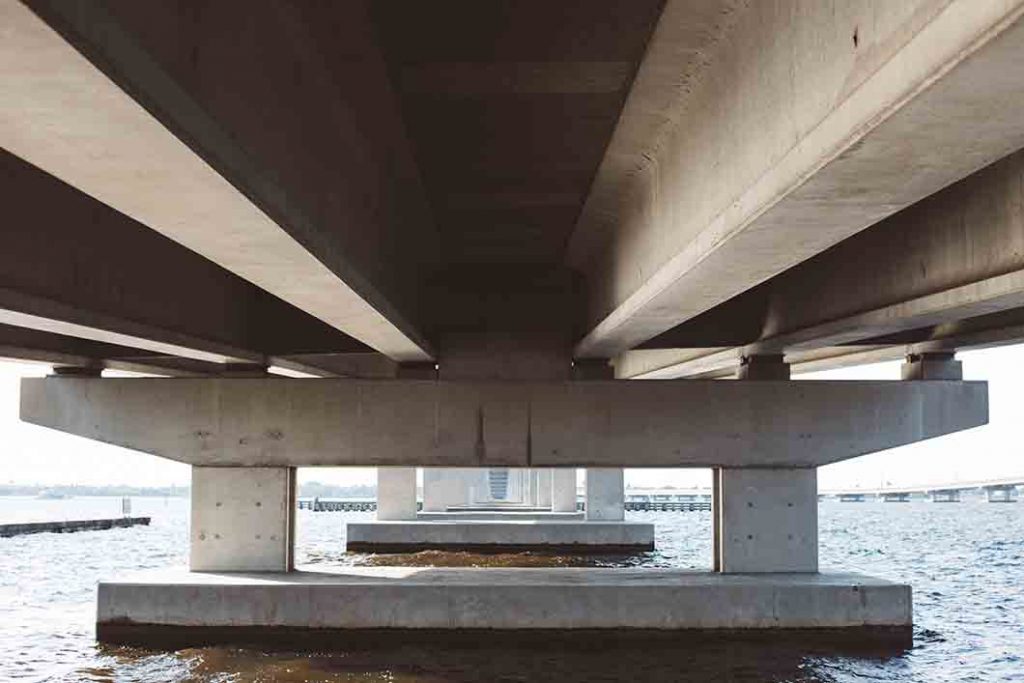Can the Circular Economy Improve Infrastructure’s Sustainability Problem?
Guest article by Megan Ray Nichols
Sustainability is no longer a buzzword that industry experts bandy about to try and improve their eco-friendly image — it has become a corporate responsibility. Infrastructure, in particular, has a growing sustainability problem. Why does our infrastructure have such difficulty with sustainability, and could a circular economy improve this problem?
Infrastructure Defined
First, what falls under the blanket of infrastructure?
The Cambridge Dictionary defines infrastructure as “the basic structure of an organization or system which is necessary for its operation, esp. public water, energy, and systems for communication and transport.”
In a city or town, the infrastructure includes everything from the water and power grids to the roads you use to drive to work to the cable and internet that flow into every home and business. Much of this isn’t currently sustainable — if something breaks, it’s replaced with a new item.
What Is a Circular Economy?
At its core, a circular economy is the continuation of the three R’s that we were all taught in grade school — reduce, reuse, recycle. Its goal is to separate the idea of economic growth from the challenge of resource scarcity, by creating an economy that generates nearly no waste.
Right now, as a species, all we do is consume. At current rates, we’ll need 1.7 planets to support our current consumption habits, and that number will continue to rise as the Earth’s population reaches nearly 10 billion by 2050.
A circular economy can manifest itself in a variety of ways. You might see it in a single consumer recycling their home’s plastics and then purchasing an item made from recycled plastic. Once that item has reached the end of its lifecycle, it is recycled again into something new. On a larger scale, manufacturers can reduce their use of primary raw materials — another name for new or freshly manufactured items — by switching partially or entirely to recycled ones.
Nearly any industry can adopt this practice. Construction companies can source recycled wood and concrete, or even switch from natural timber to composite options for the framework. Automotive manufacturers can create cars with recycled steel and plastic from old or junked vehicles. Even organic waste can be reused to generate energy. Since 2009, waste processing plants have begun incorporating membrane bioreactors — nearly 100 as of the last count, with more scheduled for to open in the coming years — that filter solid waste and convert it into electricity.
The tools are there to work toward adopting a truly circular economy, so why is our collective infrastructure lagging so far behind when it comes to sustainability?
Sustainability and Infrastructure
What can we do, as individuals and business owners, to make our local infrastructure more sustainable in the long run?
Some countries are already taking a step in the right direction. Masdar, in the United Arab Emirates, is a city under construction that was dreamed up in 2006 with the goal of being one of the world’s first net-zero cities. Net-zero means the city will not generate any carbon emissions or waste and will be self-sufficient by relying on its power generation. While it might be a work in progress, it is a step in the right direction.
Lagos, Nigeria, is one of the biggest cities in Africa. In 2008, to reduce traffic congestion and improve transportation sustainability, city planners implemented BRT-Lite — a dedicated bus rapid transit lane separated from the rest of the traffic by a concrete median.
Vaxjo, Sweden, is working toward shedding fossil fuels forever. The plan, implemented in 1996, calls for a 100 percent decrease in car emissions by 2030. The biggest hurdle right now is convincing the city’s 66,000 residents to trade in their gas-powered cars for a more sustainable form of transport. Vaxjo is thriving and has managed to cut its emissions by 58 percent in the last 13 years, putting it on track to achieve its goal by 2030.
These are isolated pockets of sustainability, but hopefully, these cities can set the trend. The EU estimates that by switching to a circular economy, the continent could reduce its cumulative greenhouse gas emissions by 4 percent while saving up to €600 million a year.
Setting an Example
It isn’t city planners who are going to make the most significant difference when it comes to sustainable infrastructure — it’s the business owners in each city who will have to become an example for officials. Many companies are already jumping on this bandwagon. Ford has created a closed-loop infrastructure for aluminum supply for its cars because recycled aluminum uses 95 percent less energy and generates fewer greenhouse gases. Lighter vehicles also use less fuel, further reducing each one’s carbon footprint.
Adidas is making shoes from recycled ocean plastic. Clothing manufacturers like H&M and Kering are utilizing polyester and cotton extracted from discarded clothing. Giant manufacturers like Coca-Cola, Colgate, Pepsi and others are working toward making their packaging exclusively from recycled materials.
Closing Thoughts
In the end, the move toward sustainable infrastructure won’t be a single massive shift. It will be a collaboration between businesses and consumers who make small changes that will put pressure on city planners. We are running out of time, though — if we don’t make the switch to more sustainable options by 2030, the damage we’ve done to the planet will be irreversible. It will start small, but it only takes a few pebbles to start an avalanche.
 Megan Ray Nichols
Megan Ray Nichols
STEM Writer & Blogger
 nicholsrmegan@gmail.com nicholsrmegan@gmail.com |




